Table of Contents
- WHAT IS SOLI-SOLI FESTIVAL?
- WHAT IS “SOLI-SOLI”?
- THE SOLI-SOLI FESTIVAL PLACE OF ORIGIN
- THE SOLI-SOLI FESTIVAL FEATURES
- THE VISION AND DANCE CHOREOGRAPHY
- WHERE IS SOLI-SOLI FESTIVAL CELEBRATED?
- HIGHLIGHT OF SOLI-SOLI FESTIVAL
- SOLI-SOLI FESTIVAL COSTUMES
- THE HISTORY OF SOLI-SOLI FESTIVAL
- EXPERIENCE THE BEAUTY OF CAMOTES ISLAND
- HOW TO GET TO CAMOTES ISLAND
WHAT IS SOLI-SOLI FESTIVAL?
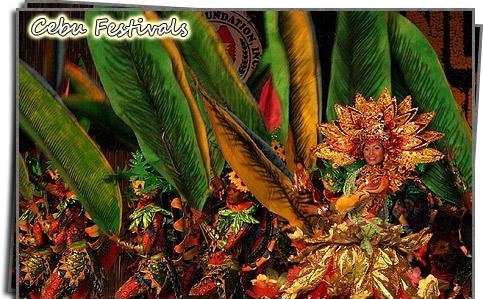
Soli-soli Festival
The Soli-soli festival is renowned as one of the most spectacular festivals on the island, as it is inspired by Sinulog and commemorates the appearance of St. Joseph’s image in San Francisco, Camotes. This event is held annually on the third Sunday of March in honor of St. Joseph the Worker. According to legend, the image was initially intended for Poro, but it ended up in San Francisco instead.
The Soli-soli Festival is a lively and extravagant celebration featuring active participants dressed in vibrant and colorful costumes, performing choreographed dance routines. The main objective of the festival is to promote both the town and the entire island, encouraging visitors to discover and explore the island’s beaches and other resources.
Since 2004, the Soli-soli Festival has portrayed the beautiful story of adaptation and gratitude of the people of San Francisco, Camotes. To this day, it has become a tradition to hold dance competitions, showdown competitions, street dancing and search for Soli-soli Queen to instill the values of hard work and gratitude for all the blessings received – essential lessons that can be learned through travel and help individuals better understand the diversity of each place and person.
WHAT IS “SOLI-SOLI”?
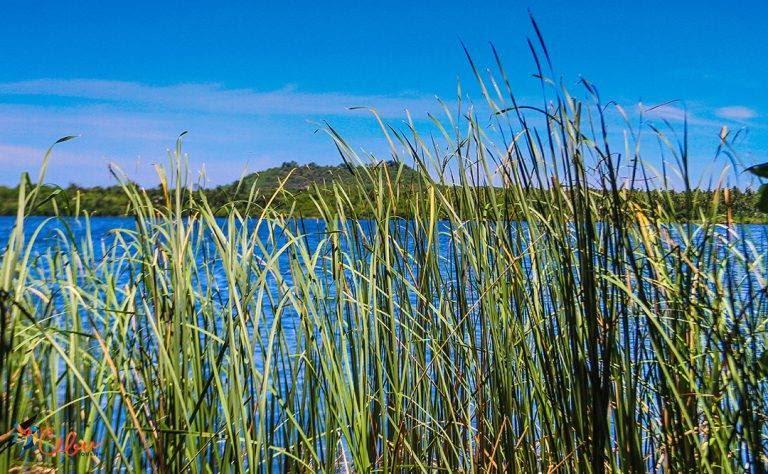
Soli-soli grass
Lake Danao, situated in San Francisco, is a well-known lake that boasts an abundance of fresh fish species, birds, and thriving plant life, such as Soli-soli, a tall grass that flourishes in the nutrient-rich soil and plentiful water by the lakeside. The locals residing in the surrounding areas have been utilizing Soli-soli for a variety of purposes in their daily lives, including as a source of income. Soli-soli is commonly used as a material for weaving mats, which are widely used as spreads among Filipinos, particularly in rural regions. Preparing Soli-soli is a straightforward process, involving harvesting the grass from the lakeside, drying it under the sun, and then weaving it into various sizes and colors.
THE SOLI-SOLI FESTIVAL PLACE OF ORIGIN
Soli-soli Festival is an annual celebration held in Lake Danao, in the island of Pacijan, is a rich source of Soli-soli. Pacijan island and Tulang island are mainly comprised of San Francisco, which is a part of Camotes island. Camotes Island is situated to the east of the main island of Cebu. It is popular among tourists and Cebuanos for its white sand beaches and exciting attractions, few take the opportunity to engage with the locals and learn how they manage to survive despite the limited amenities due to the distance from the main island of Cebu.
THE SOLI-SOLI FESTIVAL FEATURES
The local government of San Francisco, Camotes created the Soli-soli Festival to not only boost tourism but also enhance the livelihood of the town’s residents. The festival, celebrated annually on the third Sunday of March in honor of St. Joseph the Worker, is a culmination of the abundance of Soli-soli grass growing along Danao Lake. Its primary objective is to promote the town and the entire island.
Now that we have delved into the origins of Soli-Soli and the establishment of its dance steps, let’s take a look at the festival’s main highlights listed below.
1. Soli-Soli Dance Competition

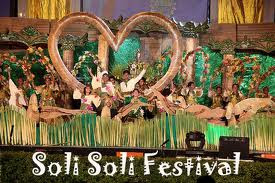
Soli-soli Dance Competition
The Soli-soli Dance Competition, which is the main event of the day and also an expensive one, is sponsored by the local government to support the participating contingents in terms of their costumes, props, and other expenses.
The majority of the participating dancers come from local elementary and high schools and are trained by local choreographers, in contrast to other festivals in neighboring towns that hire choreographers from Cebu City.
Some festivals offer a free category, allowing contingents from other towns or older groups to participate in the competition, in addition to the local elementary and high school participants.
San Francisco’s festival provide several prizes in three categories, which are street dancing performance, showdowns, and best in costumes.
2. Street Dancing
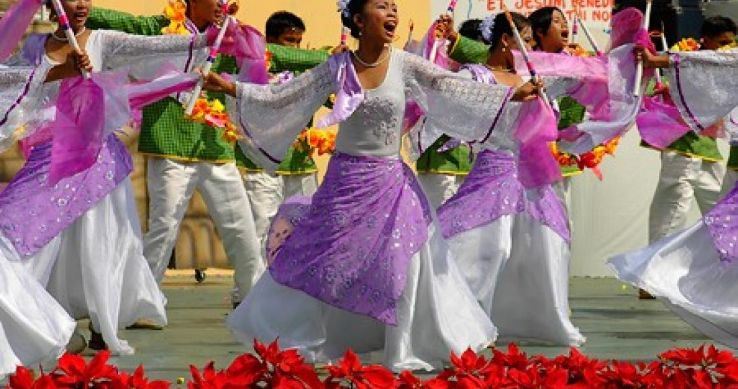
Street Dancing
The street dancing segment of the festival is a vibrant and captivating spectacle. Performers showcase their choreographed routines on the streets, and are evaluated by designated competition officials based on specific criteria, such as coordination and performance.
The street dancing typically highlights the three basic dance steps, while also depicting the legends surrounding the Lake of Danao, which is not only the center of livelihood, but also a source of stories and legends passed down from generation to generation.
The costumes, props, and other materials used in the street dancing are carefully designed and tailored to match the festival’s overall theme and spirit of gratitude.
3. Showdown Competition
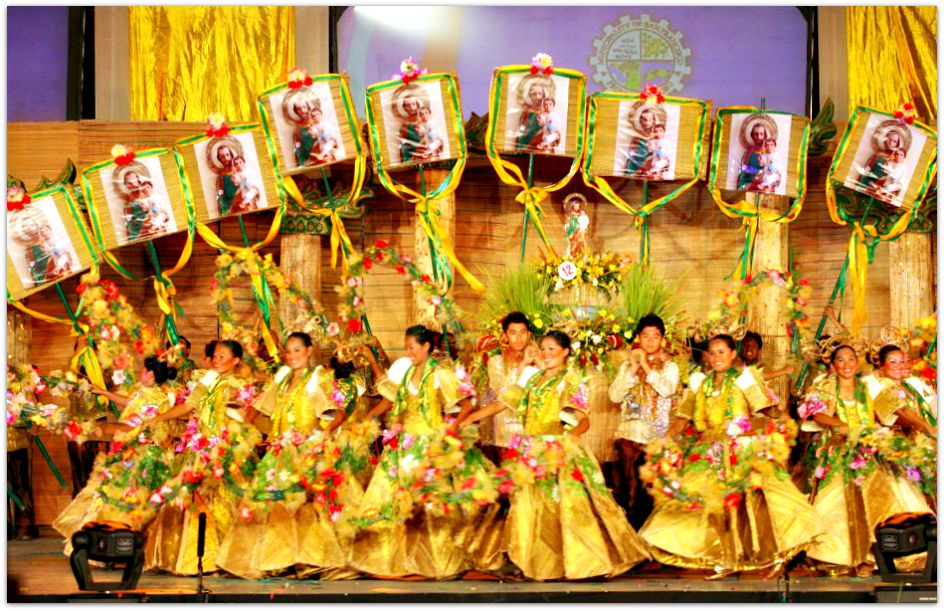
Showdown Competition
The showdown competition features the same street dancing groups, but with a more energetic and frenzied choreography.
This competition is usually held in an open and spacious venue, such as a gymnasium in a school or a public facility owned by the government.
The locals eagerly anticipate this yearly event and fill the bleachers of the gymnasium, including children, parents, and people of all ages. The audience is not limited to the locals, as residents from neighboring towns, islands, and even other provinces in the country come to witness the spectacle.
Travelers and foreigners also enjoy watching this festival competition, alongside other activities they engage in while visiting the island.
4. Soli-Soli Queen Competition
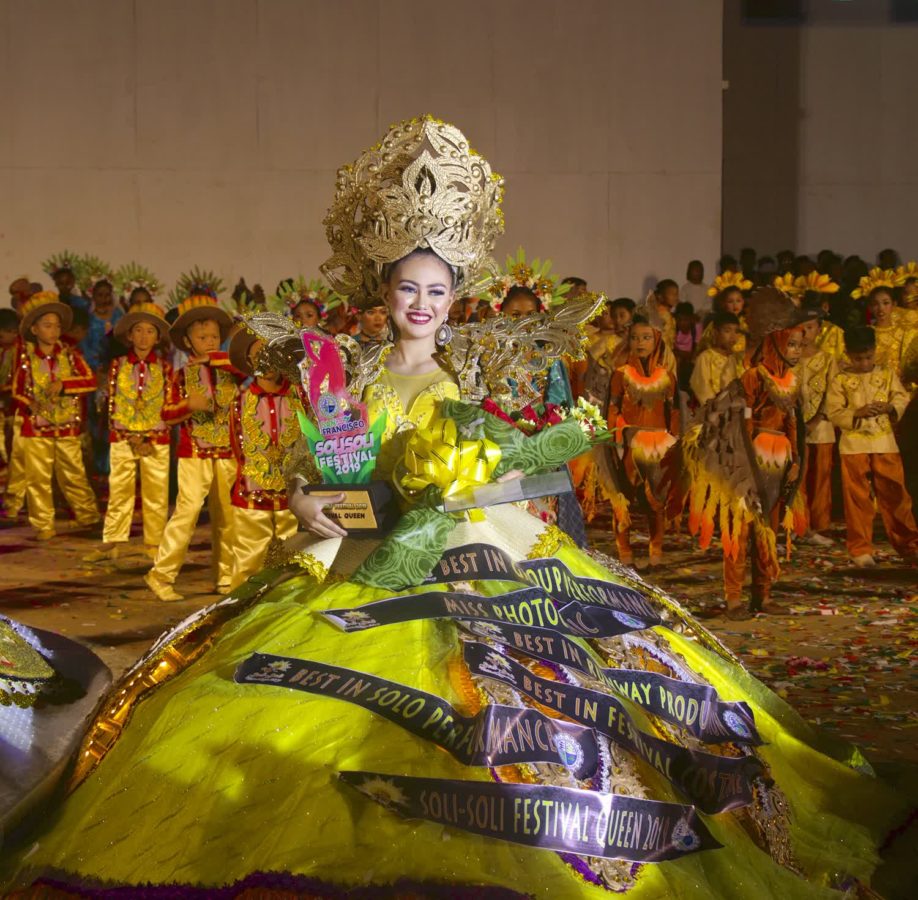
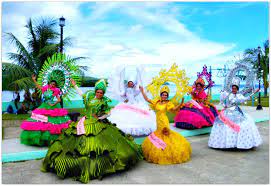
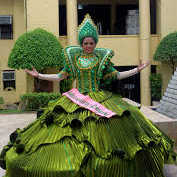
Soli-soli Queens
The Soli-soli Queen Competition is a beauty pageant that may interest those who enjoy such contests. In fact, beauty pageants are often a highlight of town fiestas across the country, as they are a source of pride for locals and families, and also entertaining for the public.
The contestants look regal in their lavishly designed dresses or gowns, adorned with intricately tailored decorations, and extended crowns that enhance their grand and seemingly royal beauty.
These queens are evaluated by designated competition officials based on specific criteria, including their looks and talents, which are tested through various segments, such as dance performance, question and answer portion, and costumes.
Overall, the Soli-soli Queen Competition is an engaging spectacle that showcases both beauty and talent.
THE VISION AND DANCE CHOREOGRAPHY
The heart and soul of Soli-soli Festival lies in its dance competitions, where various contingents from local schools showcase their choreography. The unique and captivating nature of the festival can be attributed to the originality and creativity of the dance steps.
Creating a dance routine that is well-organized and performed with style and flair is a challenging task. To establish such movements, a consultant and artistic director were hired by the mayor in 2004 to conduct research. The resulting routine served as a foundation for local choreographers to further develop and train students.
After extensive exploration of ideas and resources, the core dance steps of the Soli-Soli dance were established. These steps form the basis of the festival’s dance competition and contribute to its distinctive charm.
WHERE IS SOLI-SOLI FESTIVAL CELEBRATED?
The Soli-soli festival is celebrated in the municipality of San Francisco, which is part of Pacijan Island in the Camotes Island province of Cebu, Philippines. Although the Camotes Islands are known for their white sand beaches and exciting attractions, many tourists may overlook the opportunity to immerse themselves in the local culture and learn about how people survive despite the lack of amenities due to the islands’ distance from mainland Cebu.
The Soli-soli plant, which is abundant in Lake Danao, San Francisco, Cebu, serves as both an industrial resource and a festival emblem of the Pacijan Island fiesta celebration. This event is held in glorification of St. Joseph the Carpenter, the patron saint of the town, every March on the 3rd Sunday, coinciding with the town “fiesta”. It is worth noting that every town in the country has a patron saint who watches over its inhabitants. To ensure the sustainability of Soli-soli as an industry and festival emblem, it is crucial to explore conservation options.
HIGHLIGHT OF SOLI-SOLI FESTIVAL
The Soli-soli Festival serves as a platform for the locals to showcase their livelihood, which involves weaving the Soli-soli grass into various handicrafts such as mats, decorations, handbags, and pouches. The Soli-soli grass is abundant in the fertile grounds surrounding Danao Lake, making it a valuable source of income for the locals. The festival’s dance steps, choreography, costumes, and props incorporate the use of Soli-soli grass, and feature mimicked movements such as the swaying of hands to represent the grass, cutting and harvesting with scythes, and weaving of dried grass into a variety of handicrafts.
SOLI-SOLI FESTIVAL COSTUMES
The Soli-soli Festival is a celebration that expresses gratitude towards the Soli-soli grass, which grows abundantly in the town. During the festival, the costumes and props used are crafted from the Soli-soli grass, highlighting its importance and beauty.
The Soli-soli Festival incorporates the use of Soli-soli grass in its dance routines, choreography, costumes, and props, mimicking the process of weaving the grass
The costumes, props, and other materials are meticulously designed and customized to complement the Thanksgiving theme and enhance the overall celebration. The attire is fit for royalty, with elegant, ornate decorations on the long dresses or gowns, and grandiose crowns that add to their majestic appearance.
The festival’s queen contestants also wear lavish long dresses or gowns with intricate decorations and extended crowns, adding to their regal and grand appearance.
THE HISTORY OF SOLI-SOLI FESTIVAL
The Soli-soli Festival, which is inspired by the Sinulog Festival, is widely regarded as one of the most spectacular events on the island. This festival commemorates the arrival of St. Joseph’s image in San Francisco, Camotes, and tells the story of how the image was mistakenly brought to the wrong town. Despite multiple attempts to correct the error, the image always found its way back to its original church.
The Soli-soli grass, which thrives by the lakeside due to the abundance of nutrients and water, is a crucial component of the festival. The local residents have been using this grass for various purposes in their daily lives, including as a source of income.
Since 2004, the Soli-soli Festival has been an occasion to showcase the resilience and gratitude of the people of San Francisco, Camotes. Dance competitions, street performances, showdown competitions, and the search for the Soli-soli Queen have all become part of the festival’s tradition. These events serve to impart important lessons about the value of hard work and gratitude for life’s blessings – lessons that can be learned through travel and that can inspire one to travel and gain a better understanding of the diversity of people and places.
EXPERIENCE THE BEAUTY OF CAMOTES ISLAND

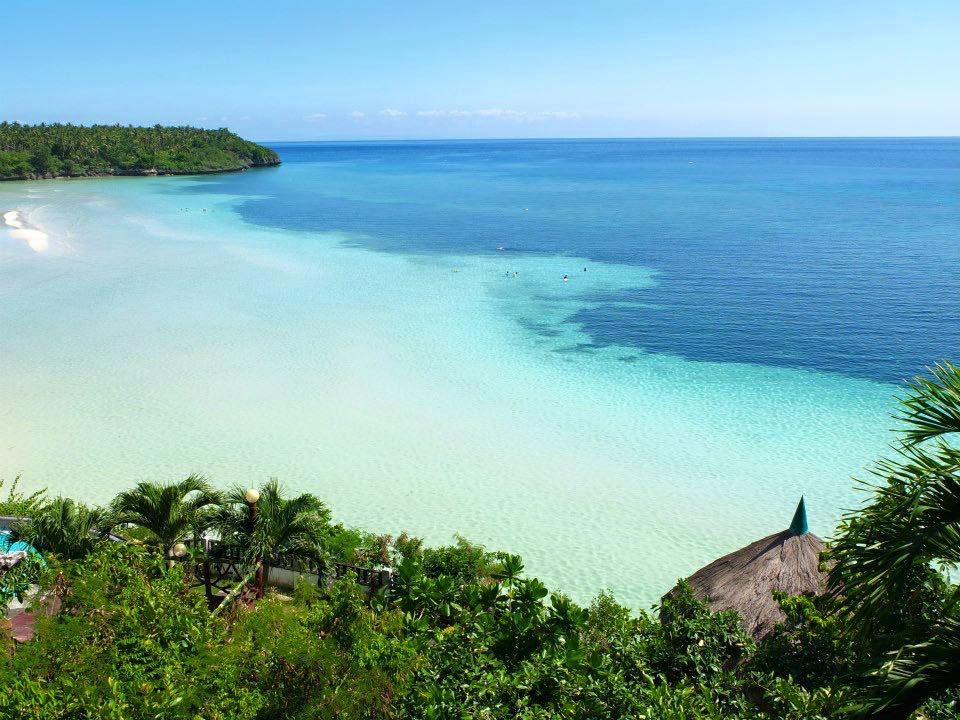
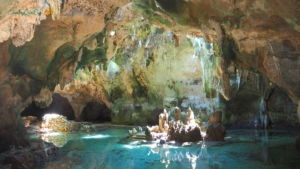

Famous for their unspoiled waters, exquisite white sand, and stunning sunsets, the Camotes Islands are located in the Camotes Sea near the Province of Cebu’s coast. The islands hold a significant place in Philippine history as well, as Antonio Pigafetta, a survivor of the Battle of Mactan, stayed there for several days before proceeding to Cebu.
Comprising four islands, the Camotes Islands are located approximately 60km east of Cebu in the Visayas Region of the Philippines. Diving center is situated on Pacijan Island, the western island in the north. The islands are remote and serene, boasting panoramic tropical vistas and tranquil waters – making them an ideal location to focus on freediving training and finding inner peace in a natural environment. Apart from the exceptional free diving opportunities, there are plenty of other activities to keep visitors occupied during their time on the islands.
HOW TO GET TO CAMOTES ISLAND
Upon your arrival at Mactan-Cebu International Airport, you can opt to take a taxi to either the Port of Cebu or the Port of Danao. It is recommended to choose the white taxis as they operate with a meter system, ensuring you won’t be overcharged. The taxi fare to Cebu Port should be approximately 350 php while it should be around 600 php to Danao Port, taking into account the traffic conditions.
If you’re departing from Cebu, you can board the Ocean Jet ferry, which operates daily at 6 am, and it will take approximately 1 hour and 45 minutes to reach Poro Pier in Camotes Islands.
To get to Consuelo Pier in Camotes Islands from Danao, you can take the Jomalia ferry, which has an estimated travel time of 2 hours.
While exploring Camotes Island, you have the option to either rent cars and motorcycles or take a one-way journey in other modes of transportation like vans and pickups.
Article Sponsored by: Video Production NYC

